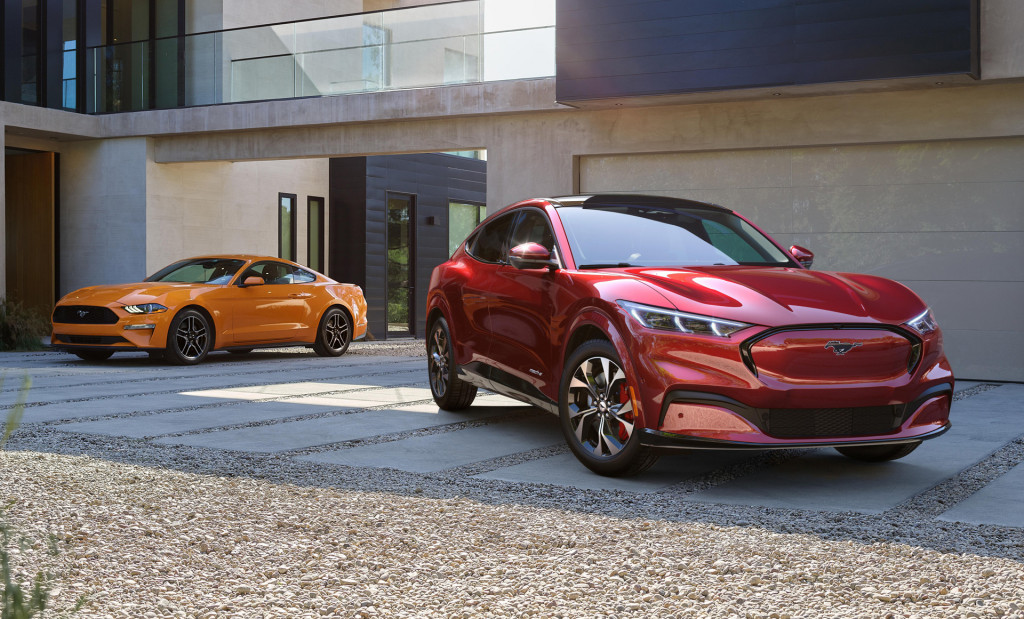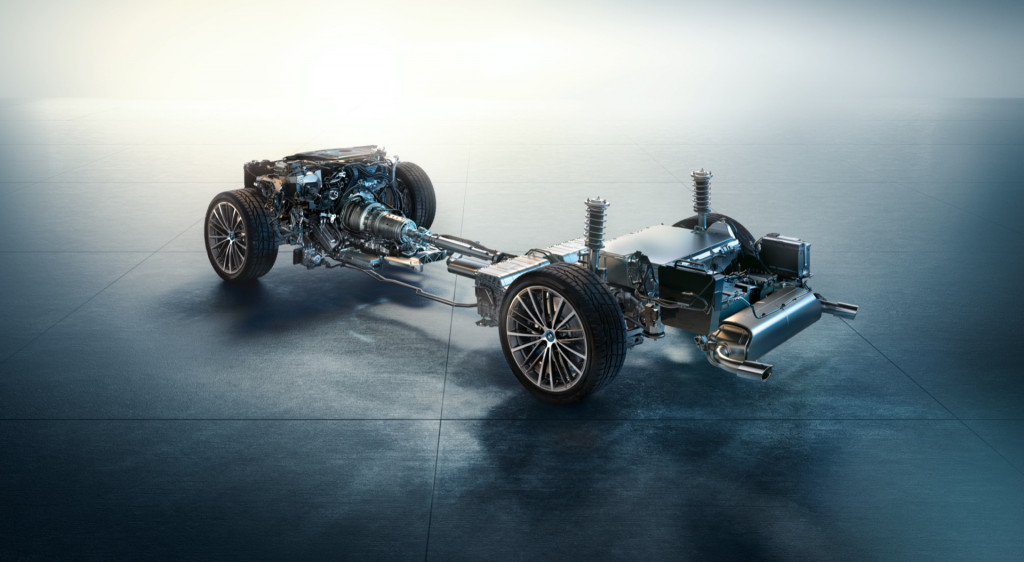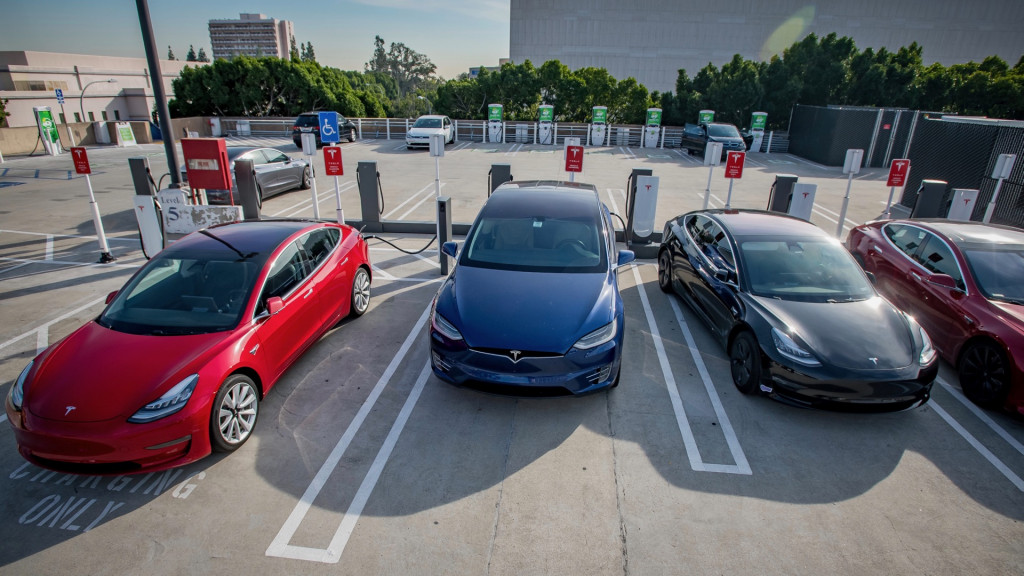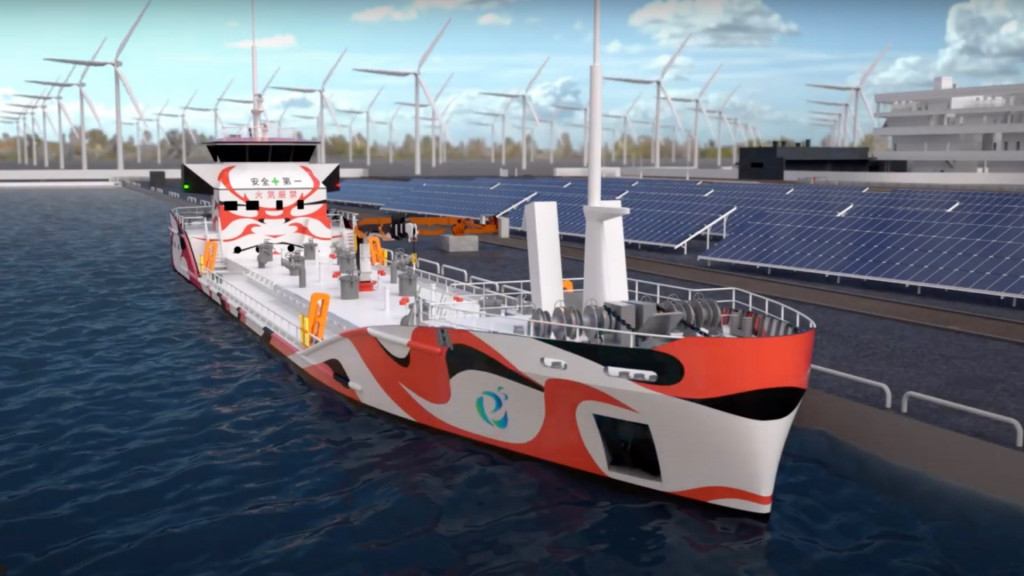Which carmaker might be planning a second upcoming electric truck?
And what country moved to incentivize plug-in vehicles this week?
This is our look back at the Week In Reverse—right here at Green Car Reports—for the week ending May 30, 2020.
This week we brought a number of strategy and technology updates regarding upcoming EVs, although announcements about actual production models remained thin as the auto industry and transportation-tech sectors cautiously restart. Ford’s director for EVs, Mark Kaufman, told GCR and other outlets this week in a Q&A call that it’s not expecting Mach-E electric SUV sales to be affected by low gas prices. Kaufman also tipped us off on several geeky details about the Mach-E that we think shows a deeper commitment to EVs at the company than its mixed signals otherwise might have suggested.

2021 Ford Mustang Mach-E First Edition
On Friday, Toyota announced that the price of the 2021 RAV4 Prime plug-in hybrid will land below $40,000—before figuring in the EV tax credit or other incentives.
Earlier in the week, Tesla suddenly dropped prices by thousands of dollars for most of its lineup—all but the Model Y. The only way this isn’t a complete gain for shoppers is that Tesla appeared to drop unlimited Supercharging for the Model S and X. And the 2021 BMW 530e plug-in hybrid sport sedan has received a power boost and quicker acceleration versus last year’s model; but so far there’s no indication it gets better mpg or plug-in range.

2021 BMW 530e plug-in hybrid system
Hyundai has given away a strong hint about which plug-in hybrid is arriving in the U.S. later this year, in lieu of the discontinued Sonata Plug-In Hybrid: the Santa Fe Plug-In Hybrid.
France is incentivizing electric cars and plug-in hybrids as part of a $9 billion program, and a corresponding push to make the country the world’s top producer of EVs. Electric-car sales show signs of gaining ground in Europe despite the economic crisis. Will they follow a similar trend in the U.S.?

Marengo Charging Plaza, Pasadena, California
The largest public DC fast-charging station in the U.S., which includes 24 Tesla Supercharger connectors plus 20 more that are brand-agnostic, has opened in Pasadena, California. And why are DC fast charging stations located where they are? A quick video from Electrify America hinted that the considerations relate back to real estate in some respects.
A new hydrogen fueling station design with a smaller footprint, more hydrogen capacity, and dual nozzles will help allow more throughput for fuel-cell drivers at busy times.
A group of companies in Japan is working to create an electric oil tanker that will itself run on renewable energy. There’s some heavy irony in this one.

e5 electric oil tanker (screenshot from promotional video)
The startup REE claims to have one of the lowest, flattest skateboard platforms for electric vehicles—by locating most of the propulsion components in the wheel wells. Now it’s turned to suspension expert KYB for some help in tuning the setup.
An interview with Lordstown Motors’ CEO suggested that the company, which occupies a mammoth former GM plant and aims to start making electric work trucks later this year, has the ambition to approach current Tesla volume levels sometime later this decade.
And last weekend, the teaser for the week’s episode of Jay Leno’s Garage included a clip of Tesla CEO Elon Musk explaining that the production Cybertruck would be slightly scaled-down. However Musk changed his tune before the episode actually aired, emphasizing that the production truck would be the same size as the running concept—and that there could be room for a smaller electric truck in the future.
_______________________________________
Follow Green Car Reports on Facebook and Twitter
[ad_2]
Source link
